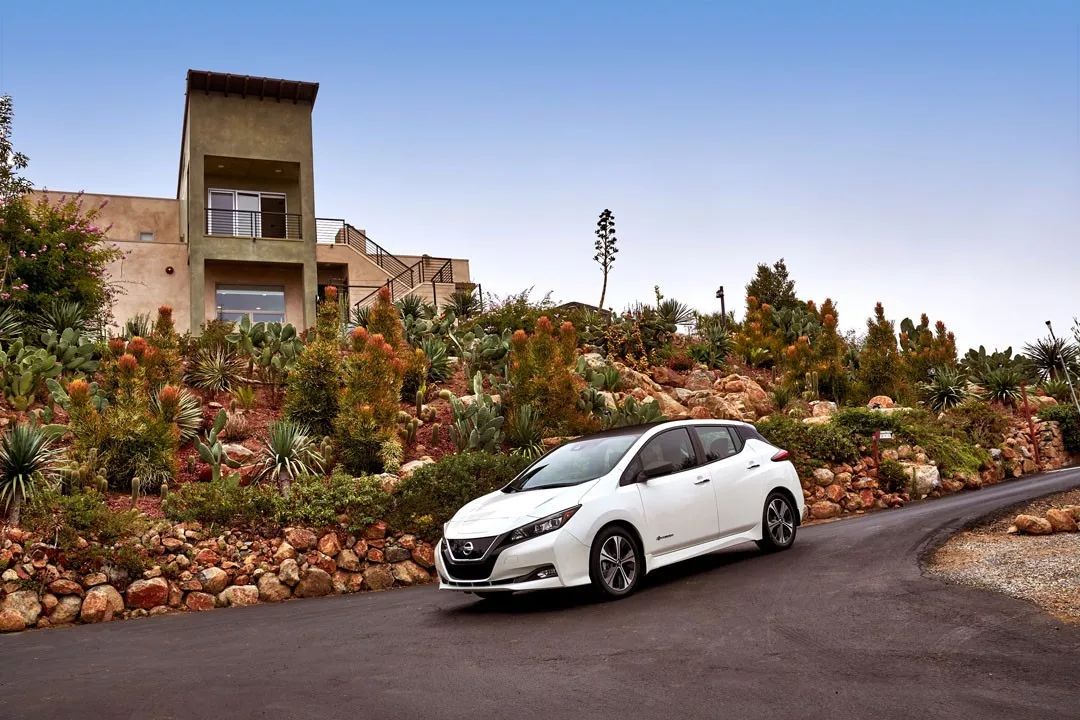Success experience has proven to potentially make people better or more blind.
In the trench of electric vehicles, there have always been two parallel branches of development that gradually infiltrate each other over time.
One is the new generation electric vehicle, which takes the form of a technological product to create a means of transportation, giving it a natural star quality that has won countless fans. The other is the classic electric vehicle, which replaces traditional fuel power with electric power, with other parts having not been greatly modified, often topping the sales charts due to being cheap and reliable.
The typical representative of the new generation electric vehicle is Tesla, which is known for its sexy and charming qualities. However, such qualities come with a corresponding cost. For those with a lower budget, choosing a classic electric vehicle might be less intelligent and less open, but it’s practical, reliable, and trustworthy.
This is the essence of the survival of classic electric vehicles, with the Nissan Leaf being the representative model.
The Nissan Leaf was once hailed as the world’s best-selling electric vehicle, ranking first on the global electric vehicle sales list multiple times. It has become a classic case study for many manufacturers and research institutions, and has always had a great reputation among media and customers.
In 2018, the Nissan Leaf was newly released with a fresh image, higher battery capacity, and longer battery life, attracting a large number of fans and showing stable sales trends.
However, recently, everything has changed.
Reversal of Reputation
A user drove his newly purchased 40-degree electric Leaf to a charging station and used the fast charging service, then posted his experience on Twitter.
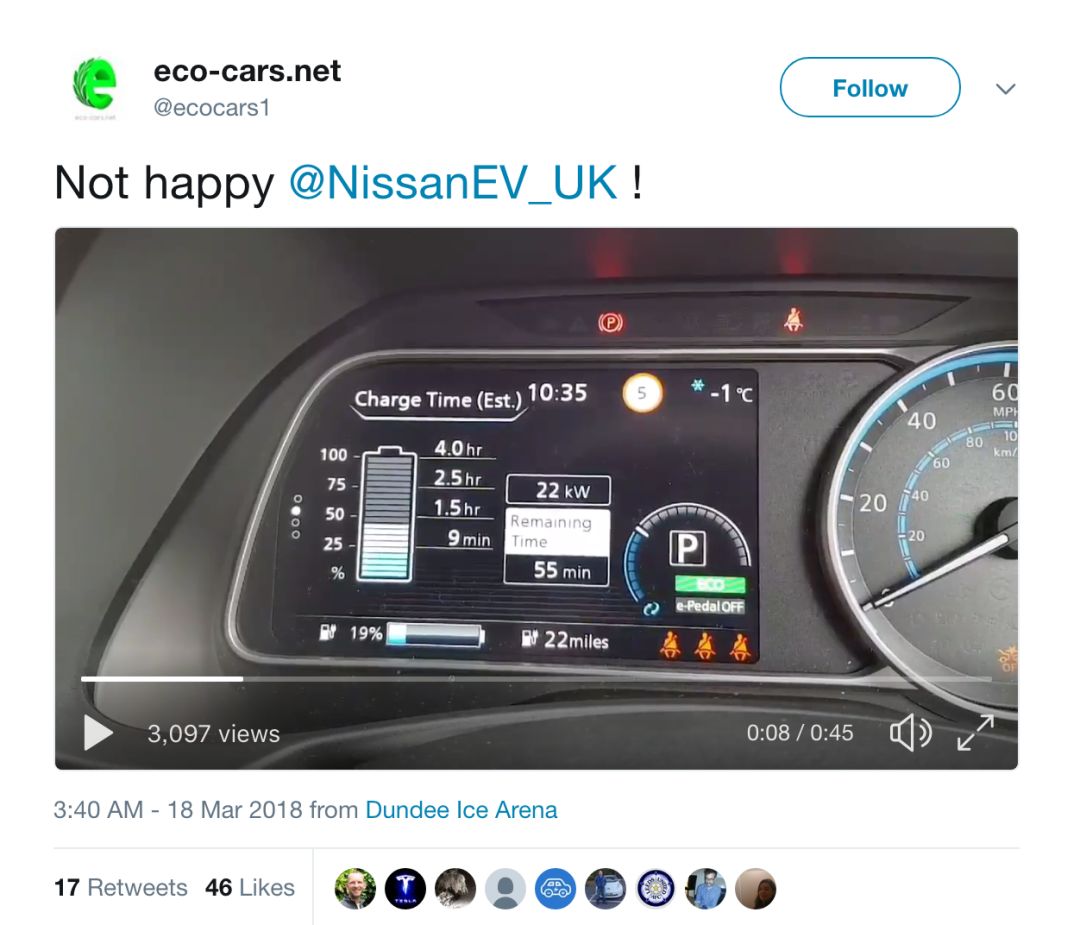
I’m not happy at all!
In the video, the user used the 50 kW fast charging pole, and the first two times were normal. However, on the third charge, due to the battery overheating, only 22 kW of charging power was left, and during the charging process, it could no longer exceed 24 kW.
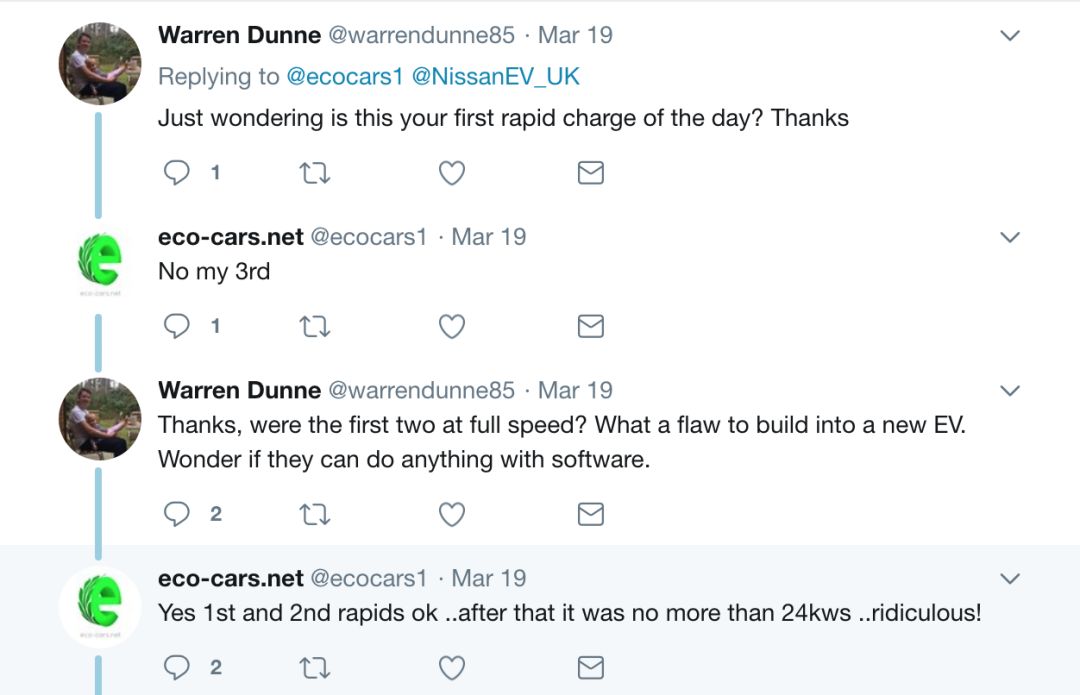
He is not an ordinary car owner, but a distributor of Leafs since 2011. He emphasized that this phenomenon has never occurred on previous 24-degree and 30-degree Leafs, and it happens 100% of the time on the 2018 Leaf.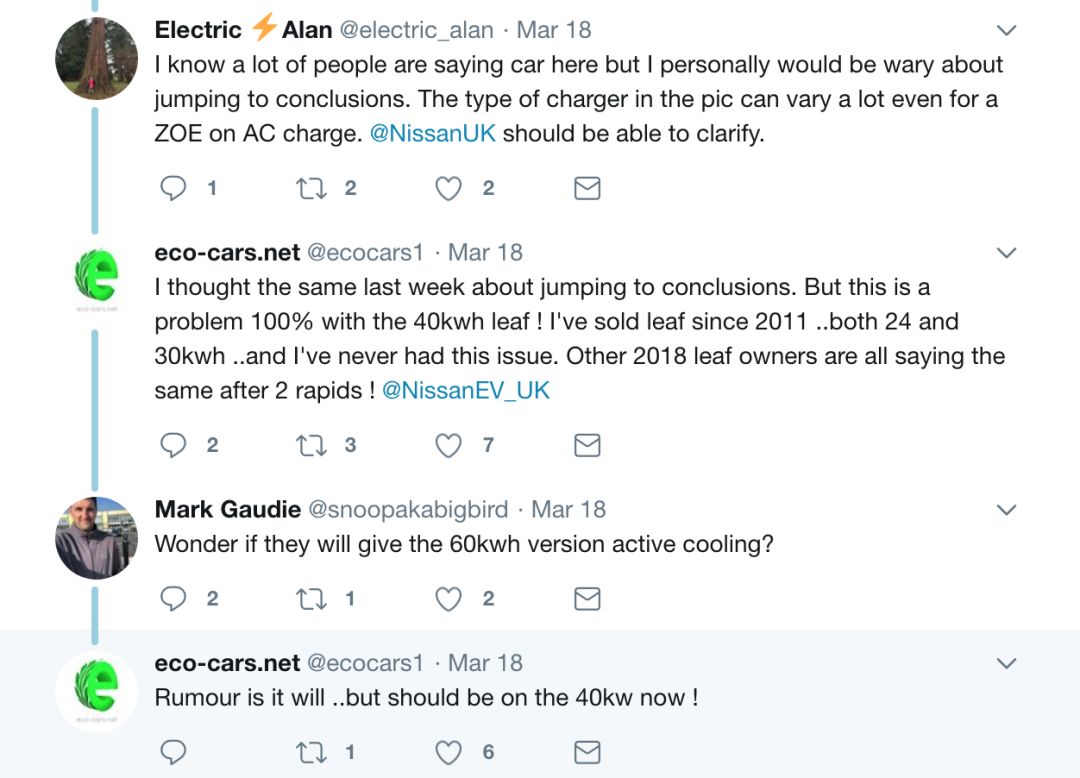
One after another, car owners are starting to post information online.
It’s not just a matter of charging speed. When you’re driving the new Leaf at high speed, it’s also easy to notice the phenomenon of overheating the battery.
On the SpeakEV forum, a post about the Nissan Leaf’s charging speed has reached nearly 200 levels. And on Twitter, everyone has started discussing the topic of #Rapidgate. The discussion has continued from February of this year until now.
While everyone is attacking the manufacturers in anger, someone got a reply from a Nissan dealer that “for the sake of protecting the battery from overheating, the latest Leaf model limits fast charging times every day. After charging once a day, the speed will naturally decrease.”
The first time is 40 kW, the second time is 27 kW, and the third time is 22 kW. These are experimental data from car owners.
“What if you want to go on a long trip?” “Don’t even think about it.”
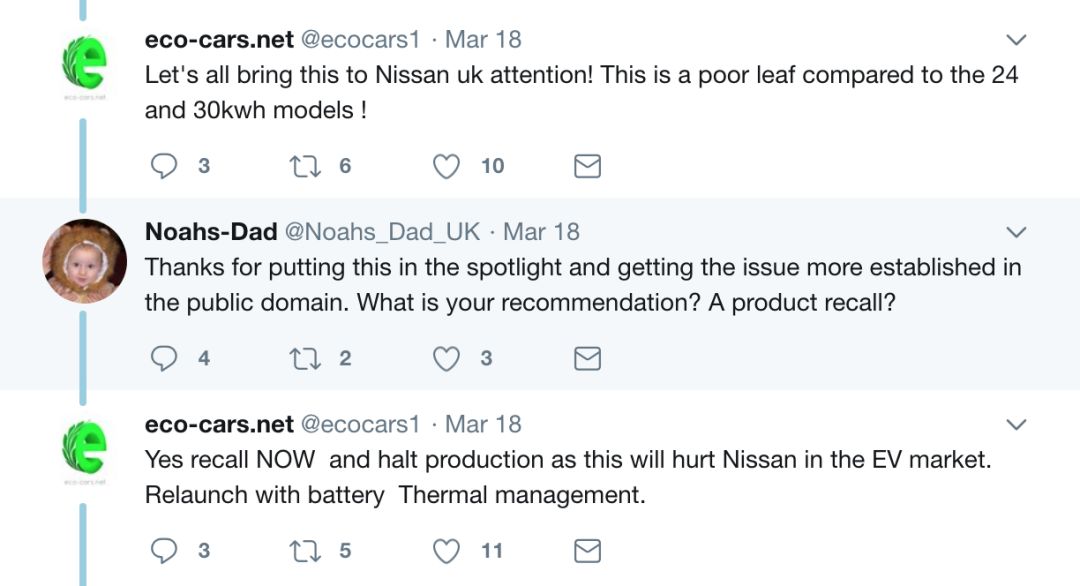
Looking back at this car, the initial promotion was that it only takes 40 minutes to charge from 0-80%.
Manufacturers must recall this car! This is the anger of users.
What Went Wrong
The most fundamental reason for this is that the car lacks a thermal management system and uses an air-cooled system for battery cooling, which is what we commonly refer to as a passive cooling system.
The so-called passive means that it lacks the ability to actively control its external environment. In contrast, a water-cooled system is an active cooling system.
Nissan Leaf did not intentionally simplify the configuration of the latest models. The old models of Nissan Leaf have always used air-cooled systems, as well as batteries from AESC and battery management systems from Calsonic Kansei.
Let’s review the graph we translated in the previous McKinsey report, which can give you a more intuitive understanding this time.
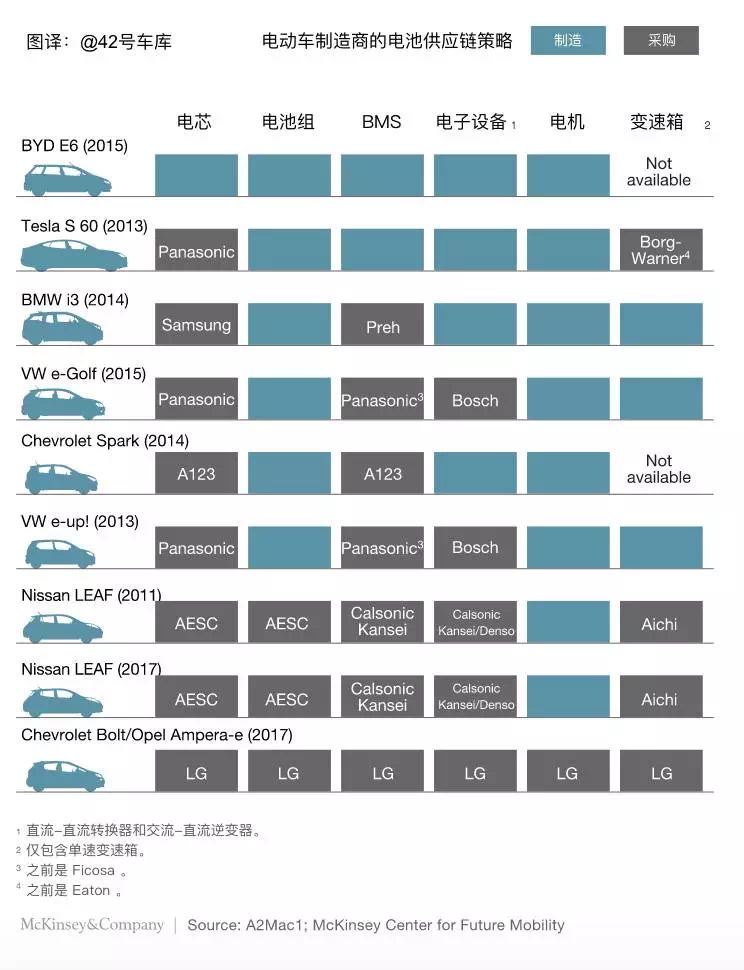
The uncontrollability of the air-cooled system is reflected in the fact that when it faces high-speed driving or fast charging scenarios, it has to use methods that limit performance to maintain normal operation of the vehicle.If we consider that the early development of electric vehicles reduced investment in thermal management systems due to cost and technical considerations, it can be understandable. However, when the new Nissan Leaf model was equipped with a larger battery, had higher mileage capabilities, and was able to drive at high speeds, users naturally had expectations for long-distance driving.
However, Nissan chose to remain silent and avoid the negative feedback from both customers and media.
Someone shared a post about successful charging under the #Rapidgate topic.
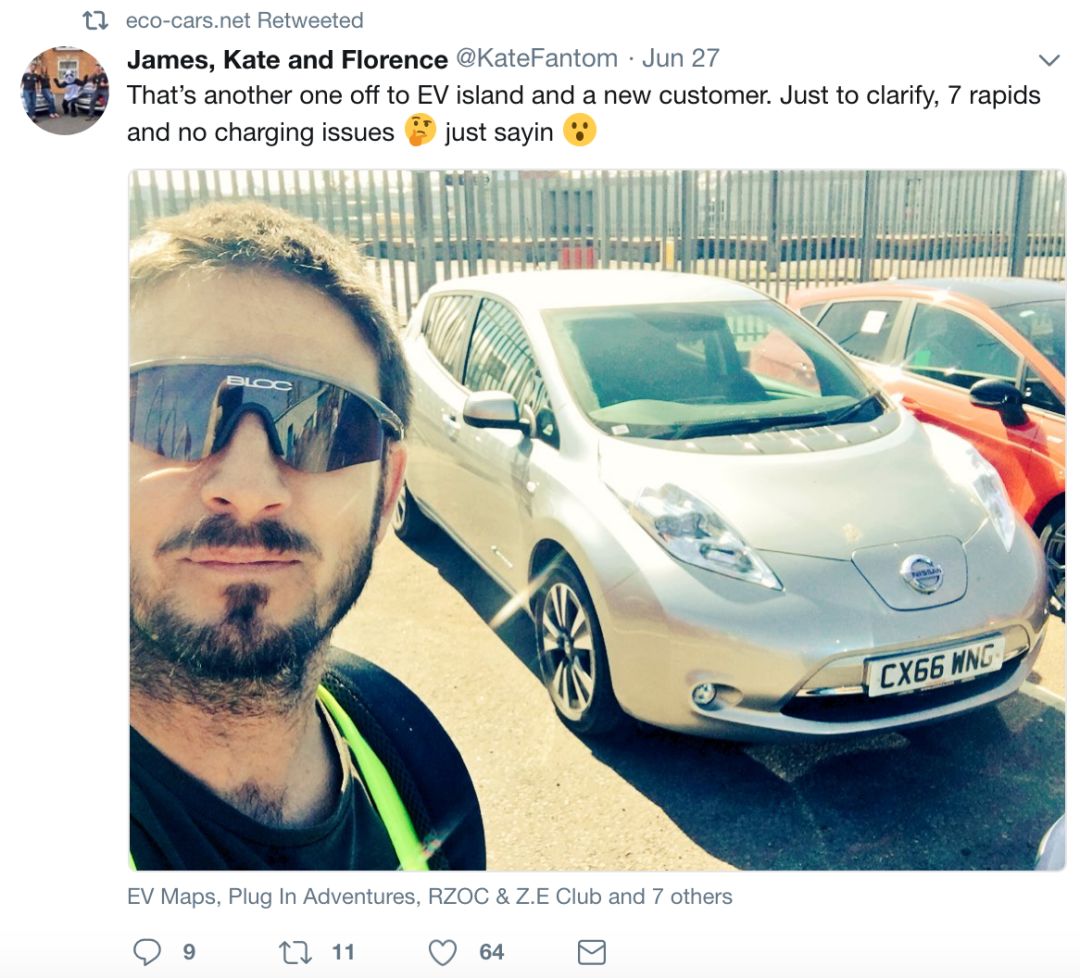
Don’t be surprised, this is the first-generation version of Leaf with a 24 kWh battery.
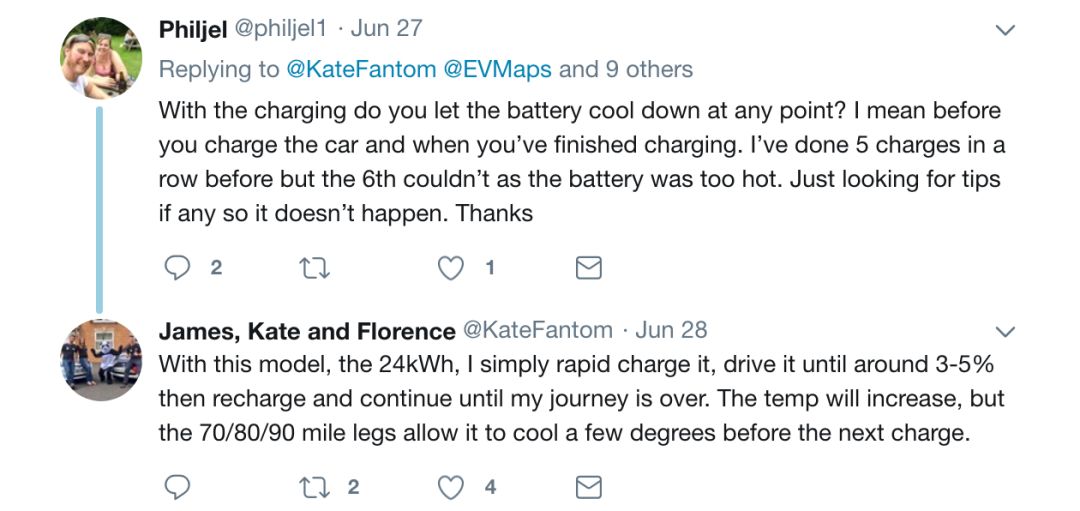
In other words, Nissan spent seven years to bring the product experience back to its original state.
One possible reason for discussion is that the 2018 Nissan Leaf uses NCM 622 batteries, which have higher energy density but poorer heat stability. The performance of new models in response to overheating issues may even be worse than that of old models. The manufacturer cannot be unaware of this issue during vehicle testing.
It is hard to imagine that a manufacturer with years of experience in electric vehicle development would treat its users in such a rough way.
Moreover, apart from the increase in mileage, the energy consumption of the 2018 Leaf has not been improved and is even worse.
According to EPA data, the energy efficiency of the 2018 Nissan Leaf in mixed conditions, measured in MPGe, is still 112, unchanged from the previous generation.
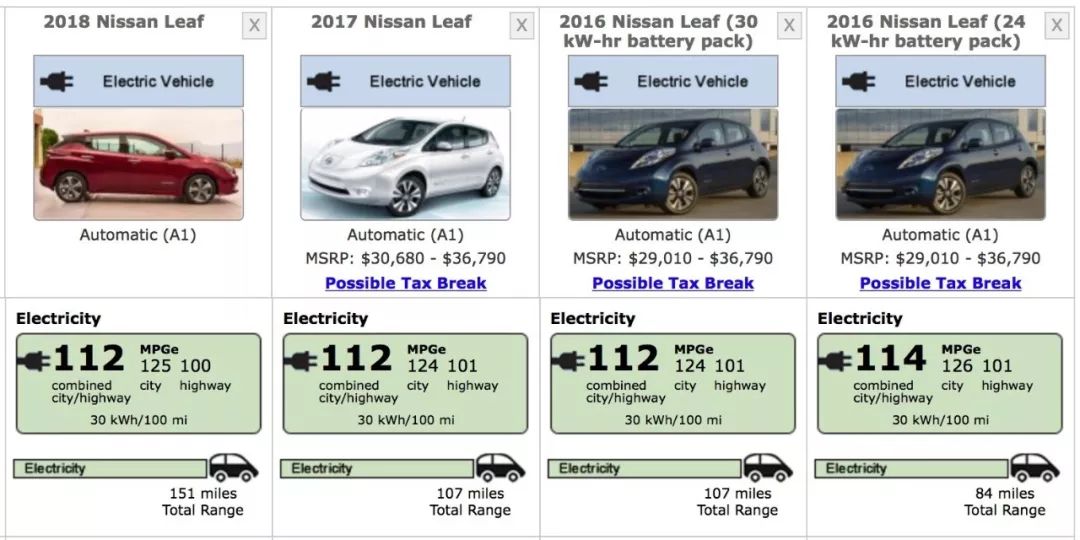
Here, MPGe means the number of miles that can be driven with one gallon of gasoline, representing the energy usage efficiency of a vehicle. In the field of electric vehicles, MPGe is equivalent to the number of miles that can be driven with 33.7 kWh of electricity.
The modern Ioniq still tops the EPA electric vehicle energy efficiency rankings with 136 MPGe and an average power consumption of 15.7 kWh per 100 kilometers. The Model 3 of Tesla achieved a score of 126 MPGe with an average power consumption of 16.7 kWh per 100 kilometers.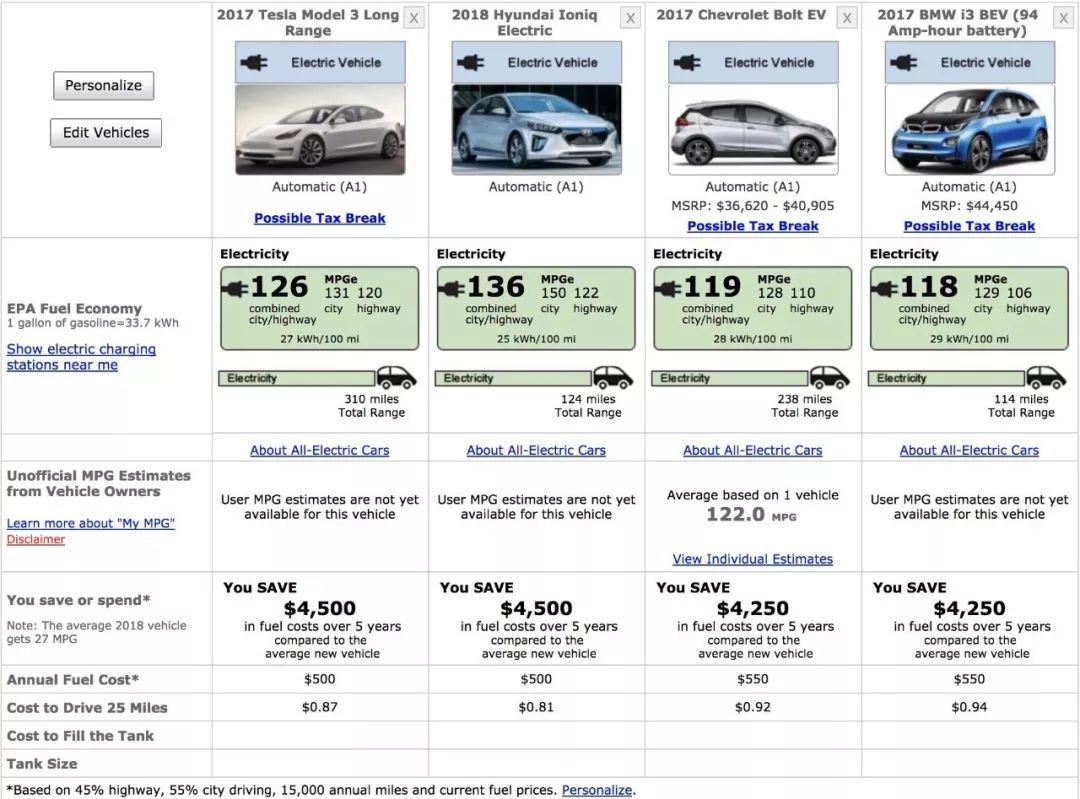
Despite maintaining a score of 112 MPGe, the Nissan Leaf fell short of competitors and the first generation 24 kW-hr Leaf, which scored 114 MPGe. Converted to kilowatt hours per hundred kilometers, the first generation consumed 18.7 kWh per hundred kilometers, while the latest model consumes 19.1 kWh per hundred kilometers.
In other words, the Leaf simply iterated surface range data, sacrificing the fundamental performance of electric vehicle usage experience.
If we dig deeper into the reasons, Nissan sold the battery factory when the Leaf was selling best, selling 51% of AESC’s shares to China’s Jinjaing Investment, and Reuters recently reported that the deal has been canceled. The battery factory is temporarily without a buyer, but that’s another story.
This deal was initially applauded by many people. Taking the battery factory as an independent entity looked like the most advantageous development path. On the surface it looked very nice, but in reality Nissan had to choose LG Chem as the next supplier of the Leaf to enter its true next-generation version.
At this awkward period of changing suppliers, Nissan can only rely on past plans for a transition, sacrificing the interests of consumers.
And this case also tells us that if a manufacturer does not have in-depth mastery of three core technologies, it will be susceptible to uncontrollable passive situations in product development.
Another data statistic shows that Nissan Leaf’s battery degradation is also terrible. The 24 kW-hr version had a 20% capacity reduction after five years of use, and the decline rate of the 30 kW-hr version was even worse.
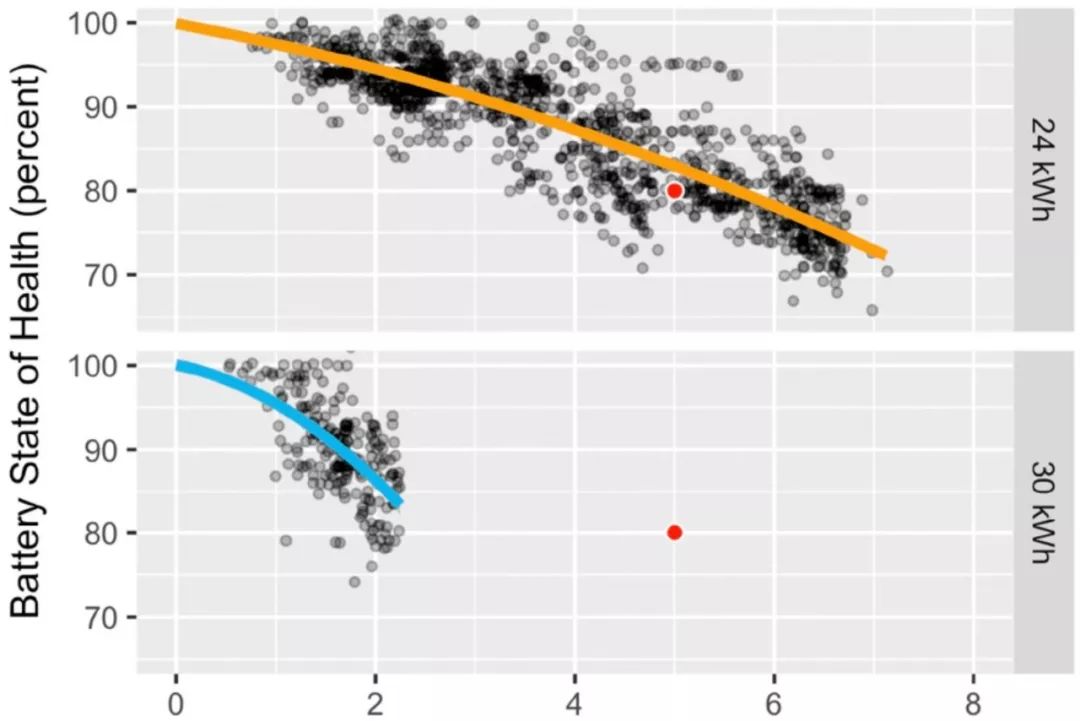
The lifespan of a battery damaged by high temperatures is irreversible.
The only thing that might be noteworthy is that the Leaf adopted a heat pump system sooner, making it more resistant to low temperatures rather than high temperatures.
What can you expect when a classic electric car can’t even do well in terms of electric-related performance?
The core experience of an electric car
Recently, there has been a popular topic about the range performance of the NIO ES8 at 120 km/h. Due to the limited sample size of user test data and the uncertainty of real-world scenarios, I do not want to directly adopt this data as the final result of this car for discussion.
However, it is worth noting that the performance of the NIO ES8 may fall short of some users’ expectations when it comes to high-speed driving range.
Is it due to the technical barrier or the insufficient attention to high-speed user experience?
Personally, I prefer to attribute it to the latter.
Before discussing it, let’s take a look at another electric car product that is regarded as the representative of traditional car manufacturers, the Jaguar I-PACE. The reason is that this I-PACE only supports a maximum fast charging network of 50 kW and does not support three-phase power.
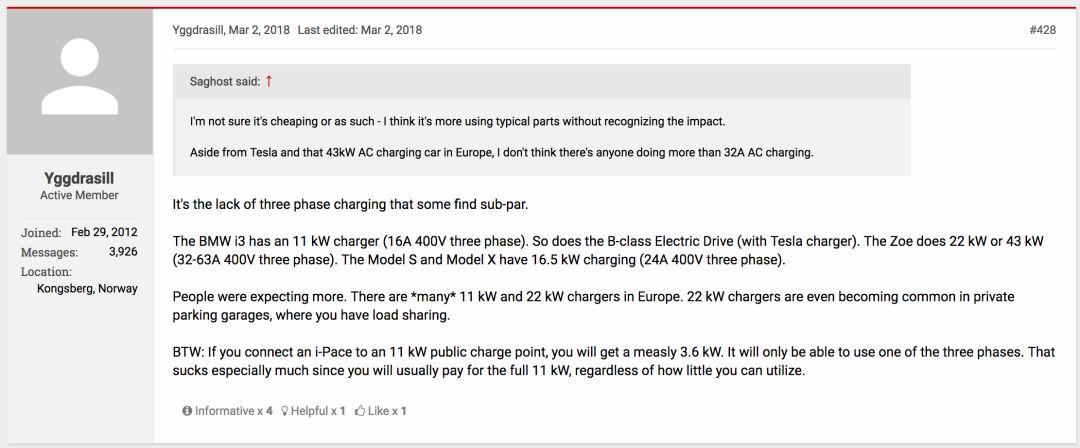
If you connect to an 11 kW public charging station, you will only get 3.6 kW of electricity in the end.
Users on the forum have complained that Jaguar does not provide charging features that are even supported by BMW i3, Mercedes-Benz B-class, and Renault Zoe, not to mention Tesla’s own supercharging network.
These performances make people realize that how much experience do the project developers of this generation of electric vehicle products have in driving electric vehicles? Do they usually drive electric cars?
When we talk about the overall usage experience of an electric vehicle, we are referring to the comprehensive performance of driving range, energy consumption, charging speed, and charging network density.
There are more intricate levels here, including a single driving range performance under different conditions and a comprehensive evaluation of single driving range + charging frequency + single charging speed when the vehicle needs to travel long distances.
This includes not only the support of product performance, but also the service support of the charging system. Of course, the lower the dependence on external factors, the better.
If we consider dynamic performance as the most basic performance of a vehicle as a means of transportation, then the most basic performance of an electric vehicle is the comprehensive experience of electric travel.
In the past, we talked about battery energy density as the bottleneck of technology. However, not all issues related to batteries are subject to technical barriers.
Electric vehicles do not currently have the strength to enter the long-distance market, but if an electric vehicle has no determination to enter the long-distance market, it is definitely not a competitive player with pursuits. While we are talking about the next-generation car’s 800-volt structure and 350 kW fast charging network, there are still many models in the primitive era of 40 kW+ charging.
By the way, the next-generation Leaf has been photographed supporting a charging speed of over 100 kW+
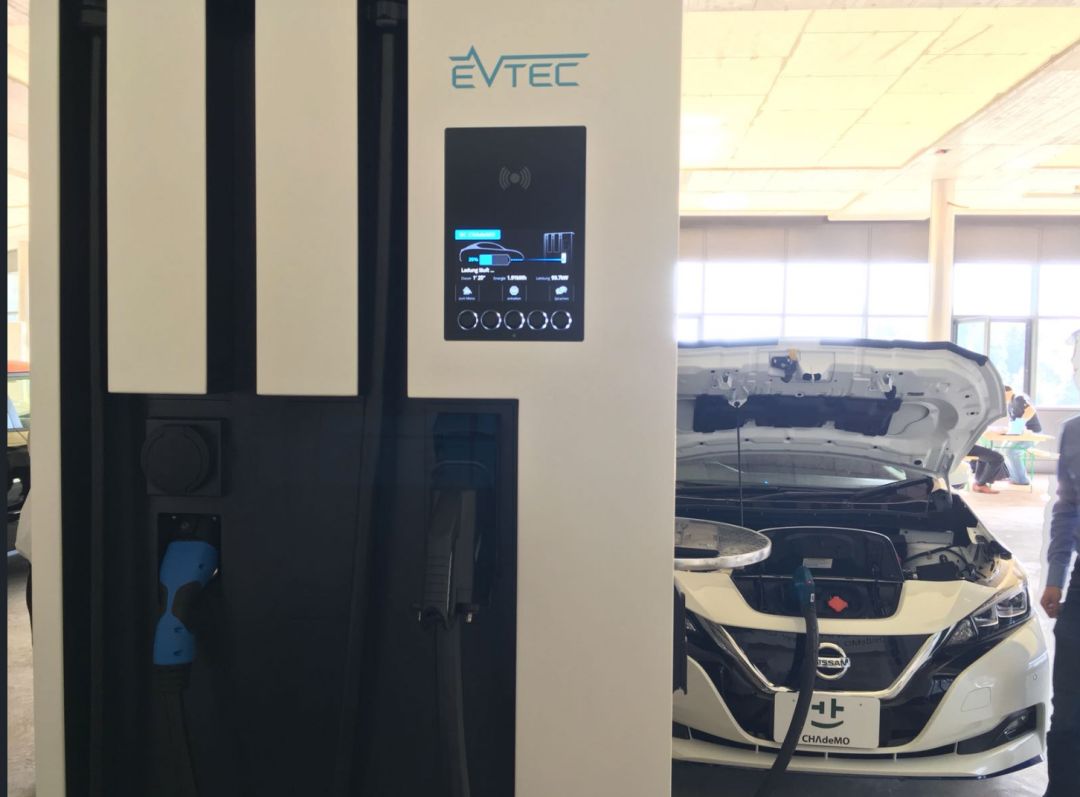
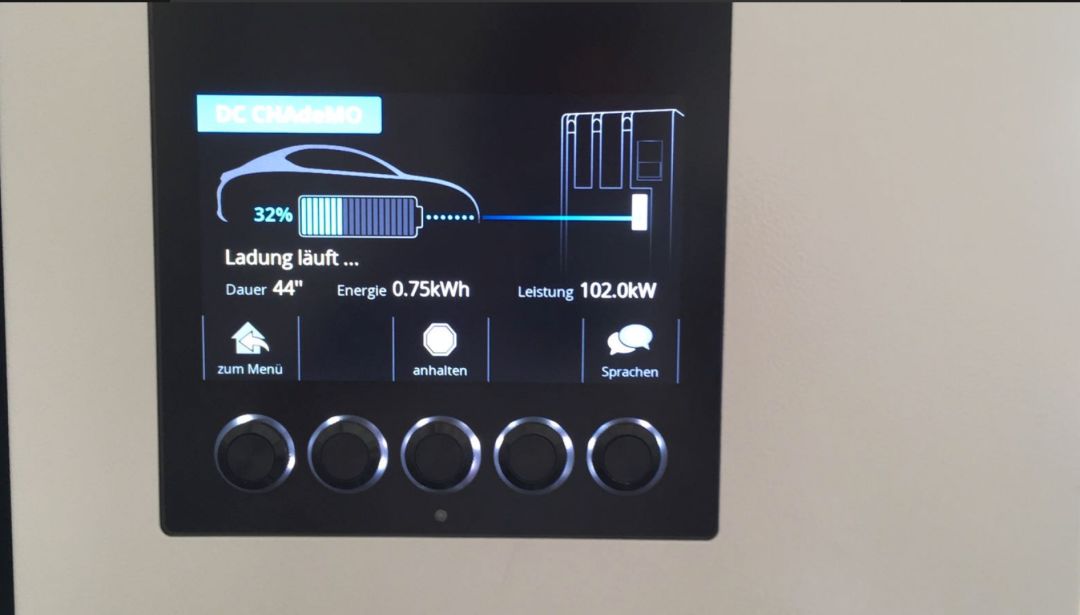
Hmm, what do you think of this generation of users?


-
The Electric Car League that will never make it to the headlines
-
How did Renault Zoe become Europe’s best-selling electric car through battery leasing?

This article is a translation by ChatGPT of a Chinese report from 42HOW. If you have any questions about it, please email bd@42how.com.
